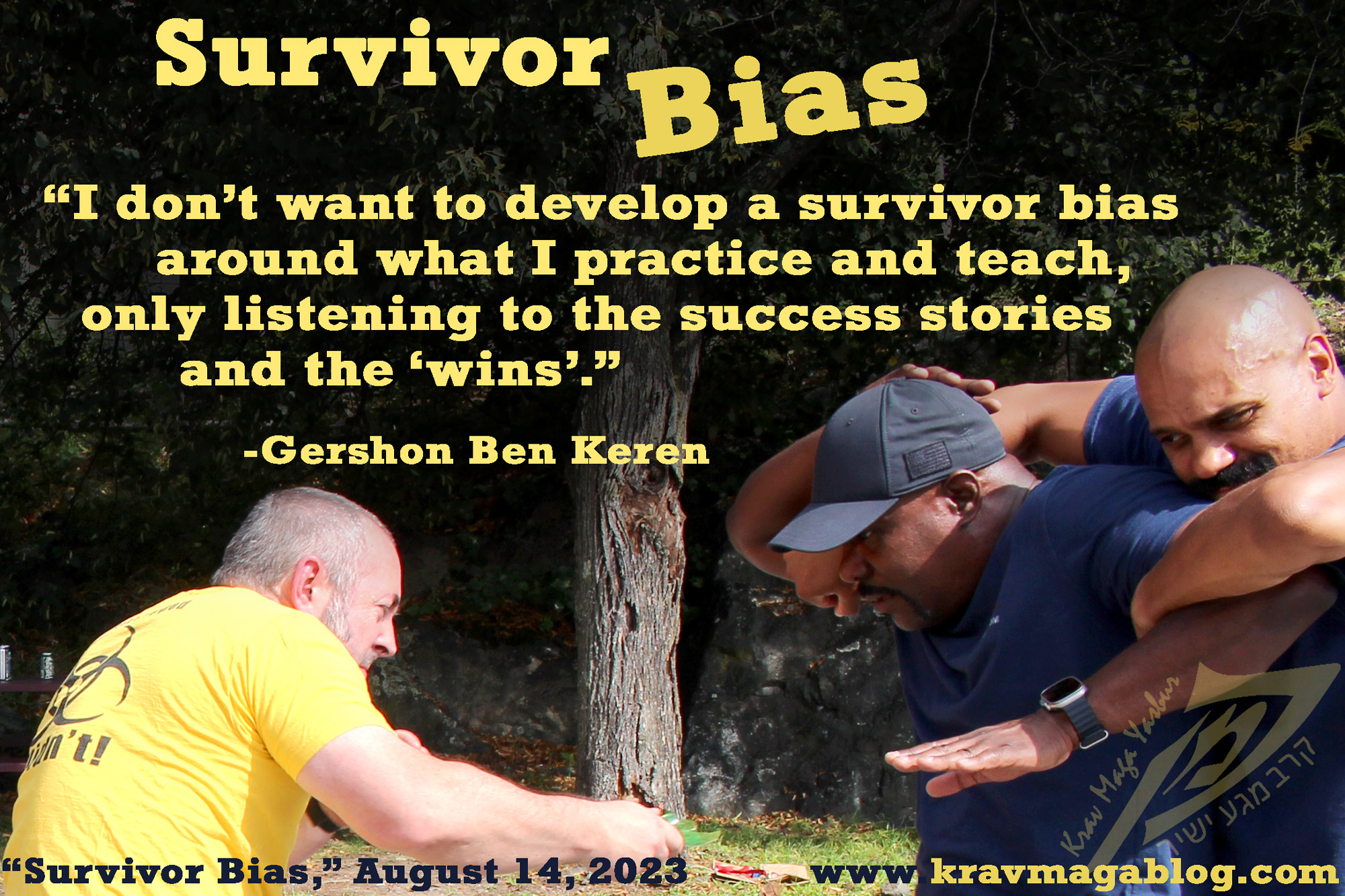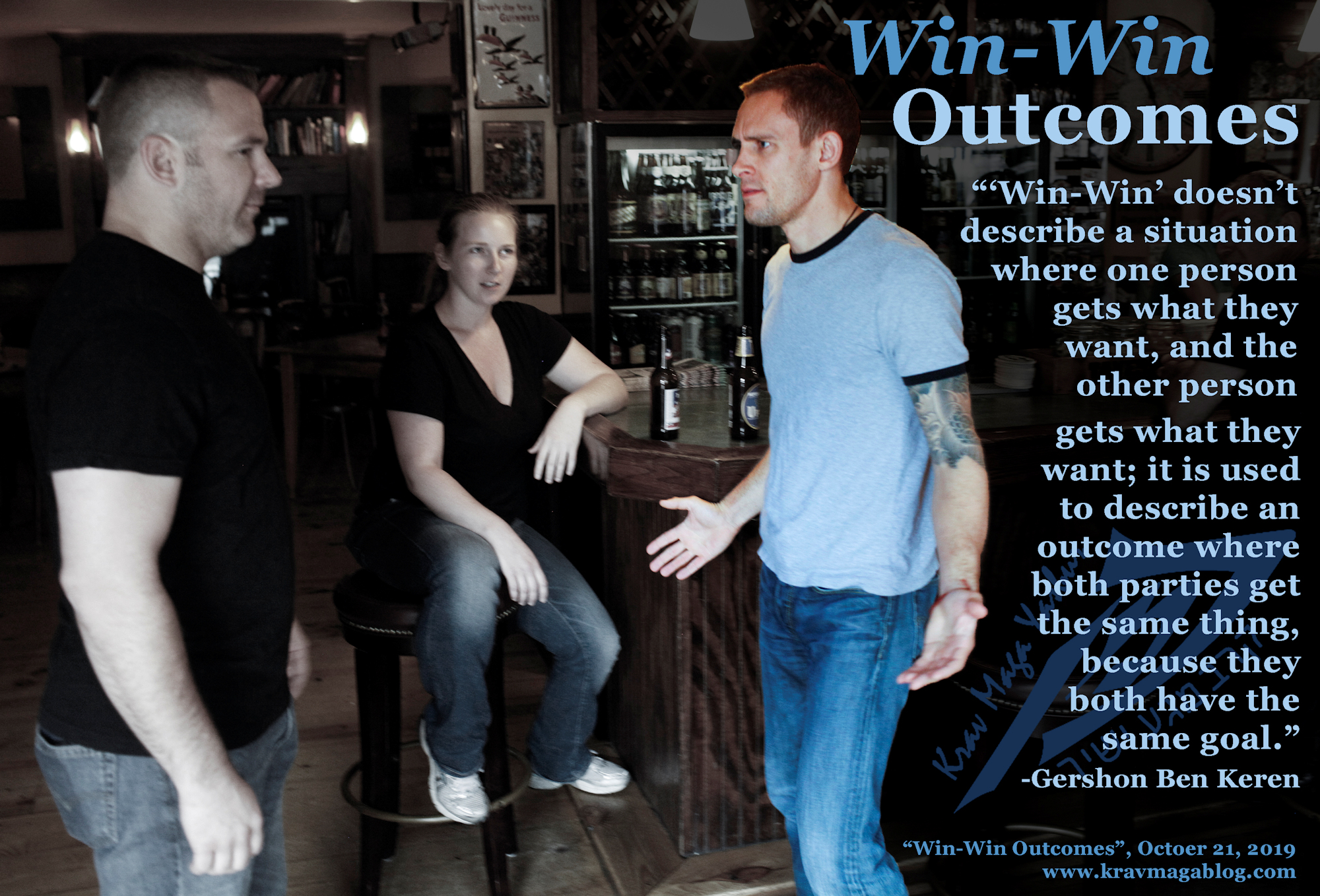Win-Win Outcomes, is an article written by Gershon Ben Keren, a 5th Degree Black Belt in Krav Maga, who teaches Krav Maga in Boston, MA. He has also authored three Amazon best-Selling Books on Krav Maga.
The term “Win-Win” to describe outcomes that benefit all parties, is one that most people are aware of; and is used extensively to describe how it is possible for everyone to get a positive resolution from a conflict or dispute. However, the term is often misappropriated, and used somewhat differently to the way it was originally defined. By taking a look at how the term originated, and the outcome/resolution it was meant to describe, we can gain a better understanding of the different types of conflicts that exist, and the most effective ways to manage them.
The term “Win-Win” was coined by Morton Deutsch in the late 1940’s during his work on a doctoral thesis that looked at different types of conflicts and how people manage and navigate them. He was a student of Kurt Lewin, who had created and developed the idea of “Field Theory”, where people were seen as either adversaries who present themselves as obstacles to get in the way of our goals, or allies who assist and help us in achieving them e.g. on my way to work today, some drivers assisted me by letting me in, when I needed to change lanes (these were my allies), whilst others blocked me, and presented themselves as obstacles, to prevent me from making a lane shift (these were my adversaries). In Massachusetts, driving is seen as a competitive activity, that often leads to minor conflicts. However, as Deutsch studied the different types of conflict as he researched his thesis, he found that most types of conflict weren’t competitive, and should have seen the various parties cooperate, rather than fight against each other.
One of the examples I use to describe this when I’m presenting on conflict management to corporate clients is as follows: Imagine a sales department, that is close to reaching its end of year target. If it does, every salesperson will receive a 20% bonus, and the managers will receive a 40% bonus. However, the two managers running the department differ as to the best way to meet the target. One believes that they should run an advertising campaign, followed up by telemarketers, whilst the other thinks that the most effective way to achieve the goal, is to set up “pop-up” stands at shopping malls, sporting events and other similar places, and have teams of salesmen working the crowds. They have 3 weeks until the end of year, and so time is short to implement either strategy, and as a result tensions between them is extremely high i.e. there’s a lot to win, and a lot to lose. However, they both win or lose together. Both want the same thing i.e. they have the same goal, which is to meet their target(s) and receive their bonuses. Deutsch describes this as a “Pure Conflict”, and these types can result in “Win-Win” outcomes. “Win-Win” doesn’t describe a situation where one person gets what they want, and the other person gets what they want; it is used to describe an outcome where both parties get the same thing, because they both have the same goal. “Win-Win” can really only exist where there is a shared and common goal – and this can give us a lot of clues, as to which types of potentially violent situations can be resolved non-physically, and which ones can’t.
Take a situation where you’re in a bar or pub, and somebody knocks into you. As a result, you spill some of your drink over them, and they become aggressive and angry towards you. Both of you will probably feel aggrieved in some way. You may feel that the other person should be looking where they are going, and it’s their own fault that they’ve now had a drink spilt over them – in fact you feel entitled to an apology on their part. However, this other person doesn’t recognize that it was their fault and believes that you are in the wrong. At this point, they don’t even have a goal or an outcome in mind, that would resolve this situation for them; they just feel entitled to act aggressively and violently towards you. If things stay this way the conflict hasn’t even begun to be managed, as one party doesn’t yet know what their desired outcome is (this is something that they may need help in defining, which can be attempted during the de-escalation process). However, it may be that they demand that you buy them another drink – something you’re understandably not happy with, as you feel that you’re the injured party in this incident. How you frame this conflict will determine the outcome. If we assume that neither one of you wants to fight, and that is the goal, then it can be managed as a pure conflict that results in a “Win-Win” outcome. However, if the conflict is framed in a competitive way where there must be a loser and a winner i.e. either one party apologizes, or the other one buys a drink, then the situation may escalate, because neither party wants to “lose”. If you view the conflict competitively then you won’t want to back down, however if you view it as a pure conflict, backing down achieves a common goal of not fighting i.e. a “Win-Win”.
I learnt a long time ago that it is often better to be effective than be right. If the two sales managers continue their conflict as the clock ticks down, and neither of their plans is deployed, it is likely that they will both lose – an outcome that exists in competitive conflicts, along with ineffective compromises that don’t achieve anything, etc. If you only ever view conflicts in competitive terms, with winners and losers, and fail to recognize the common goals that may exist in a situation, it is likely that you will always be forced to escalate things to a level you aren’t comfortable with and/or have to back down and “lose”. If you buy the other person a drink to avoid this, and to reach a “Win-Win” outcome where you both aren’t engaged in a physical fight, that isn’t “losing”.
0 COMMENTS















